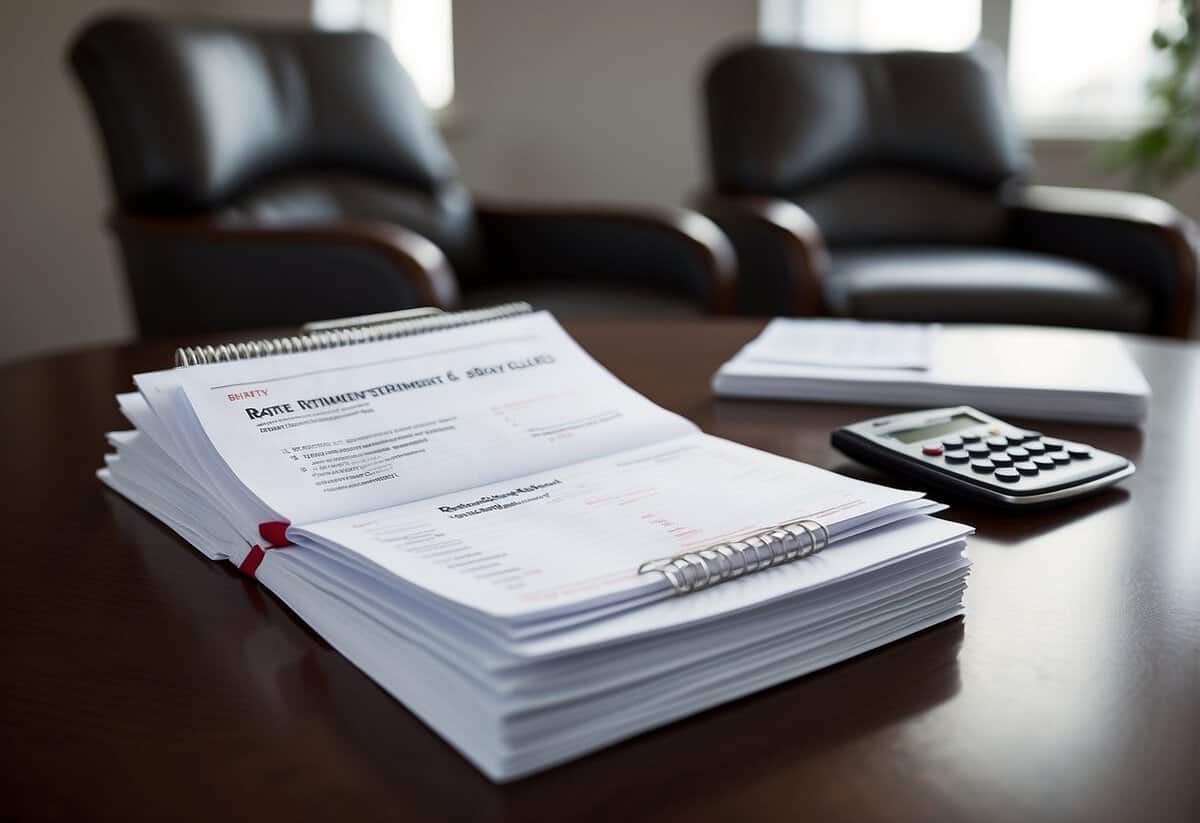How Much Should a 60 Year Old Couple Have in Savings: Planning Your Golden Years
As you approach retirement, understanding how much savings you should have becomes critically important. For a 60-year-old couple, the amount of savings can vary widely based on lifestyle, expenses, and goals for retirement. While it’s common to hear advice suggesting you need a nest egg 7 to 8 times your annual income, this figure can fluctuate. For couples, the combined savings should take into account both partners’ funds to cover the likely joint expenses during retirement. It’s also essential to factor in expected life spans, as people are living longer, potentially extending retirement years.

A specific savings target can be difficult to pin down because each couple’s situation is unique. Strategies for maximizing your savings include efficient tax planning, investment in diversified portfolios, and taking advantage of employer-sponsored retirement plans. Additionally, it’s wise to consult financial experts to create a tailored financial plan. Understanding retirement savings by your age helps you to gauge whether you’re on track and what adjustments might be needed as you edge closer to this major life transition.
Key Takeaways
- Savings goals for couples at 60 vary based on personal retirement plans and life expectancy.
- Tailoring a financial plan to maximize savings before retirement is crucial.
- Understanding and adjusting your savings by age benchmarks is key to preparing for retirement.
Understanding Retirement Savings by Age

When preparing for retirement, it’s crucial to understand how your age affects the amount you need to save. Accumulating enough savings ensures that you can maintain your lifestyle once you stop working.
Importance of Age in Retirement Planning
Age plays a pivotal role in retirement planning as it helps gauge the time left to save and the required size of your nest egg. For example, if you’re part of the 55-64 age group, the Federal Reserve indicates that it’s a time when your retirement savings should be at its peak. Early in your career, your focus may be on growing your career and income, but as you approach retirement, the focus shifts to preserving wealth and ensuring enough funds for a comfortable retirement.
What Experts Recommend
Experts often provide retirement savings by age benchmarks to guide your planning. For instance, by age 60, some recommendations suggest having between 7 to 8 times your annual salary saved. This can come from various retirement accounts like 401(k)s or IRAs, as reflected in the Survey of Consumer Finances. The average retirement savings for households led by someone between the ages of 55 and 64 is $537,560, with a median of $185,000. By understanding these averages and setting targets, you can better position yourself for a financially secure retirement.
How Much to Save for Retirement

Determining how much to save for retirement hinges on a number of factors, including your current age, desired retirement age, and lifestyle expectations. These individual variables are crucial for setting realistic and attainable savings goals.
Factors That Affect Retirement Savings
Your retirement savings can be influenced by various elements that are unique to your situation. First, consider your annual income and the percentage you can comfortably set aside each month, taking into account any existing debt. Evaluating the cost of living adjustments for your retirement years is essential, as this can greatly affect how much you will need to save. Also, don’t overlook the importance of an emergency fund which can protect your retirement savings from unexpected expenses.
Another aspect to factor in is risk tolerance, which can shape your investment decisions that grow your retirement nest egg. Life expectancy is also something that should be reflected on, as it determines how long your retirement savings must last. Lastly, ensure you’re informed about your Social Security benefits and any catch-up contributions you’re eligible for, particularly if you’re getting a late start on retirement savings.
Setting Personal Savings Goals
For a 60-year-old couple, the average retirement savings might offer a benchmark, but the median can be more telling, as averages are often skewed by high values. Most financial experts suggest aiming for a retirement fund that is 7-8 times your gross income. For example, if your household income is $100,000 per year, strive for a retirement savings balance between $700,000 to $800,000.
It’s essential to personalize these figures based on your savings goals and retirement fear—the anxiety of outliving your savings. Adjust your targets based on real numbers like your annual income, anticipated medical costs, and cost of living. Lastly, life expectancy plays a pivotal role in determining the size of your retirement savings. The longer you expect to live, the larger your savings should be to comfortably cover all years of retirement.
Financial Strategies for Maximizing Savings

In order to secure a comfortable retirement, it’s essential to focus on concrete strategies that can grow your savings before reaching the golden years. A solid plan often involves meticulous budgeting and exploring investment options tailored to your time horizon and risk tolerance.
Effective Budgeting for Retirement
Creating a robust budget for your retirement is the bedrock of financial planning. As you approach your 60s, it’s crucial to have a clear understanding of your spending habits to manage your expenses effectively. Utilize a retirement calculator to estimate your retirement account balance’s longevity in conjunction with your expected lifestyle. To bridge any income gap, make adjustments to reduce unnecessary expenses, thus increasing the amount you can allocate toward savings.
- Evaluate your current spending and eliminate non-essential costs.
- Reassess your budget regularly to ensure it aligns with your financial goals.
Investment Options for Growth
Your investment portfolio requires keen attention as it’s one of the keys to achieving your desired retirement account balance. At 60, you still have room to grow your nest egg, primarily through compounded interest in accounts like a 401(k) plan or 403(b). Consult a financial advisor or planner to explore options that best suit your circumstances, and don’t overlook the benefits of an employer match, which is essentially free money towards your retirement.
- Consider high-yield savings accounts and certificates of deposits for low-risk growth, with a focus on the APY (Annual Percentage Yield).
- Balance your portfolio across different asset classes to diversify your investments and mitigate risk.
By employing these strategies and making informed decisions with the aid of financial professionals, you can maximize your savings and work towards achieving a secure and fulfilling retirement.
Preparing for Retirement as a Couple

When you’re planning retirement together, it’s crucial to align on your financial situation. Experts recommend analyzing your combined savings to ensure you’re on track. By age 60, a common guideline is to have at least eight times your annual income put away.
Your retirement age could influence your Social Security benefits. For example, retiring at your full retirement age, which varies depending on your birth year, ensures you receive the full benefits. As a couple, coordinating when each of you will start claiming benefits can maximize your retirement income.
Here’s a quick retirement savings benchmark for you and your partner to consider:
- By 50 years old: Aim for six times your annual salary.
- By 60 years old: Aim for eight times your annual salary.
Don’t forget the power of catch-up contributions. If you’re 50 or older, both you and your spouse can contribute extra to your Individual Retirement Accounts (IRAs) and 401(k)s to bolster your savings.
For baby boomers, Generation X, and millennials, the more you save now, the more comfortable your retirement can be. Be sure to review your budget and cut any unnecessary expenses. Re-evaluate your portfolio and consider if your current investments align with your desired retirement lifestyle.
Stay informed, and regularly check your progress. You and your partner have worked hard; make sure your household retirement savings reflect the retirement you envision together.
Frequently Asked Questions

Navigating retirement savings can be tricky, and knowing how much you should have stored away by age 60 is a common concern. These FAQs are designed to give you straightforward answers about retirement savings benchmarks for couples in their 60s.
What is a good amount of retirement savings for a couple in their early 60s?
A solid retirement savings goal for a couple in their early 60s can range from $550,000 to over $1 million, depending on your lifestyle and expenses.
What should be the retirement savings milestone for someone approaching 60?
Financial experts often suggest having between 7.6 times your annual salary saved for retirement by the time you approach 60.
What’s considered an adequate retirement nest egg for 60-year-old married partners?
An adequate retirement nest egg for 60-year-old married partners typically aligns with the median savings range, which can be influenced by factors like your income level, planned retirement age, and desired lifestyle.
At age 60, How much do financial experts recommend you have saved for retirement?
Financial experts commonly recommend aiming to have at least 7 to 8 times your annual salary in retirement savings by age 60.
What is the expected average retirement account balance for a married couple at 60?
The expected average retirement account balance for a married couple at 60 varies widely, but is often over $500,000. It’s important to note that “average” can be skewed by high earners.
How do most people around 60 years old prepare financially for retirement?
Many people around 60 start to maximize their retirement contributions, adjust their investment strategies, and pay down debts to help prepare for a stable financial future in retirement.
